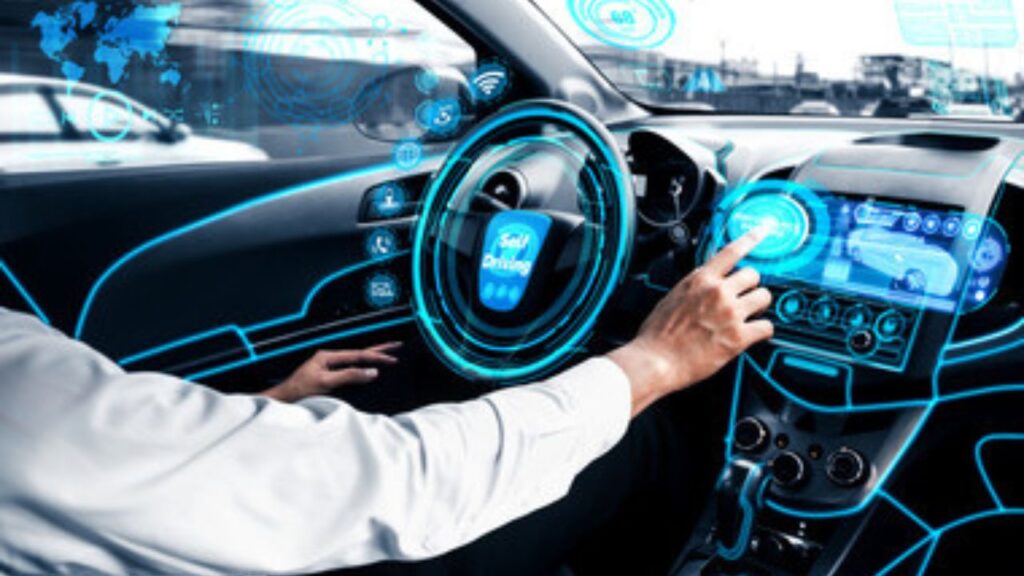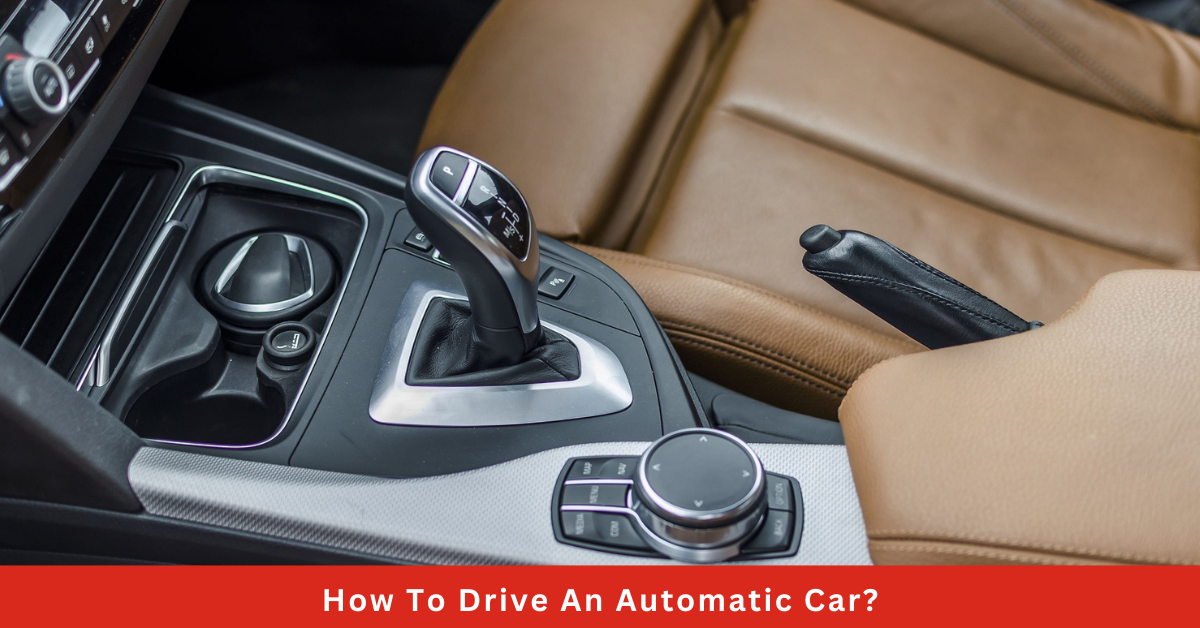Learning how to drive an automatic car can be an exciting and empowering experience. Unlike manual cars, which require a certain degree of skill and coordination to operate, automatic cars are designed to be easier and more convenient to drive. However, if you are used to driving a manual car, switching to an automatic car can take some getting used to. We will provide a comprehensive guide on how to drive an automatic car.
The Basics of Automatic Transmission
Before we dive into the specifics of how to drive an automatic car, let’s first take a moment to understand the basics of automatic transmission. An automatic transmission is a type of gearbox that changes gears automatically, without the need for the driver to manually shift gears. In an automatic transmission, the car’s computer system controls the gear changes, based on the speed of the car and the level of acceleration.
There are several components that make up an automatic transmission system, including the torque converter, planetary gears, and hydraulic system. The torque converter is responsible for transferring power from the engine to the transmission, while the planetary gears help to determine the speed and direction of the car. The hydraulic system, meanwhile, uses a special fluid to transmit power throughout the transmission system.
Importance of Learning to Drive an Automatic Car
Learning to drive an automatic car is an important skill that can have many benefits. For one thing, automatic cars are becoming increasingly popular around the world, with many drivers choosing to buy them over manual cars. In some countries, such as the United States, automatic cars are the norm rather than the exception.
In addition, learning to drive an automatic car can make your life easier and more convenient. Automatic cars are generally easier to operate than manual cars, and they can be a good option for those who are new to driving or who are looking for a stress-free driving experience. They can also be a good option for those who have mobility issues, as they require less physical effort to operate.
Description of an Automatic Transmission
An automatic transmission is a type of transmission that changes gears automatically, without the need for the driver to manually shift gears. Unlike manual transmissions, which require the driver to shift gears using a clutch pedal and a gear stick, automatic transmissions use a complex system of gears, sensors, and computer controls to shift gears on their own.
How Automatic Transmission Works
When you put your car in gear, the automatic transmission uses a complex system of gears and sensors to determine the best gear for the current driving conditions. The transmission’s computer system monitors a variety of factors, including the speed of the car, the level of acceleration, and the position of the throttle pedal, in order to determine the optimal gear.
As you accelerate, the transmission will shift gears automatically, based on the speed and acceleration of the car. When you slow down or come to a stop, the transmission will downshift automatically, to ensure that the engine is not overloaded.
Preparing to Drive an Automatic Car
By following these steps, you can ensure a safe and comfortable driving experience.
Adjusting the Seat and Mirrors
Before driving an automatic car, it is important to adjust the seat and mirrors to ensure proper visibility and comfort. Start by adjusting the seat so that you can easily reach the pedals and steering wheel. Your feet should be able to rest comfortably on the pedals, with your knees slightly bent.
Next, adjust the mirrors to provide a clear view of the road behind you. The rearview mirror should be positioned so that you can see the entire back window, while the side mirrors should be angled so that you can see the sides of the car.
Fastening the Seatbelt
Once you have adjusted the seat and mirrors, it is time to fasten your seatbelt. Make sure that the seatbelt fits snugly across your chest and lap, and that it is not twisted or tangled. The seatbelt is an essential safety feature that can help protect you in the event of an accident, so be sure to wear it at all times while driving.
Familiarizing Yourself with the Car’s Controls
Before starting the engine, take a few minutes to familiarize yourself with the car’s controls. Locate the gear shifter, which is typically located in the center console or on the steering column. In an automatic car, the gear shifter will have several positions, including Park (P), Reverse (R), Neutral (N), and Drive (D).
Other important controls to familiarize yourself with include the brake pedal, accelerator pedal, and steering wheel. Take a few moments to adjust the steering wheel to a comfortable position, and make sure that you can easily reach the pedals.
Starting the Engine
Once you are comfortable with the car’s controls, it is time to start the engine. Place your foot on the brake pedal and turn the key in the ignition. The engine should start up smoothly, and you should hear a low rumble as the car comes to life.
Before putting the car in gear, make sure that your foot is firmly on the brake pedal. This will prevent the car from moving forward or backward unexpectedly. Once you are ready to drive, shift the gear shifter into Drive (D), and slowly release the brake pedal. The car should begin to move forward.

Driving an Automatic Car
Putting the car into gear
Before starting the engine, it is essential to ensure that the car is in the “park” position. This position locks the wheels and prevents the car from moving. To start the engine, press down on the brake pedal and turn the key in the ignition. Once the engine has started, shift the gear lever to “drive” or “reverse” depending on the direction you want to go. To move forward, shift to “drive” and to move backward, shift to “reverse.”
Using the accelerator pedal
The accelerator pedal is used to control the speed of the car. To accelerate, press down on the pedal gently, and the car will start moving. Pressing down on the pedal harder will make the car go faster. It is important to remember that the speed of the car should be controlled based on the road conditions and traffic.
Using the brake pedal
The brake pedal is used to slow down or stop the car. To brake, press down on the pedal gently. The harder you press down on the pedal, the quicker the car will slow down or stop. It is important to remember that sudden braking can be dangerous, especially on wet or slippery roads.
Steering the car
To steer the car, use the steering wheel. Hold the steering wheel with both hands, and turn the wheel in the direction you want to go. It is important to remember that sharp turns should be taken slowly to prevent skidding or losing control of the car.
Using turn signals
Using turn signals is an important part of driving. Before turning, indicate your intention to turn by using the turn signal. To do this, use the lever located on the left side of the steering wheel. Push it up to indicate a right turn and down to indicate a left turn.
Changing gears
Automatic cars do not require gear changes as they shift gears automatically. However, some automatic cars have a manual mode where you can manually shift gears using the gear lever. To shift gears, press down on the brake pedal, move the gear lever to the desired gear, and release the brake pedal.
Understanding the dashboard indicators
The dashboard of an automatic car is equipped with various indicators that provide information about the car’s condition. Some of the most important indicators include the speedometer, fuel gauge, temperature gauge, and warning lights. It is important to understand what each of these indicators means and to take appropriate action if a warning light comes on.
Special Driving Techniques For Automatic Cars
Hill starts
Hill starts can be intimidating for new drivers, but with a little bit of practice, they can be executed with ease. The first step in performing a hill start is to ensure that the car is in “drive” mode. Next, press down on the brake pedal with your left foot and keep it pressed down. Use your right foot to press down on the accelerator pedal gently to increase the engine’s revs. Release the handbrake slowly while keeping your foot on the brake pedal. Once you feel the car starting to move forward, release the brake pedal and continue accelerating up the hill.
Driving in traffic
Driving in traffic can be a nerve-wracking experience, especially if you are driving in a busy city. To make your driving experience smoother, it is important to maintain a safe following distance, stay alert, and anticipate traffic flow. To maintain a safe following distance, keep at least a two-second gap between your car and the car in front of you. To stay alert, avoid distractions such as using your phone or eating while driving. Instead, focus on the road ahead and anticipate traffic flow by looking ahead and scanning your surroundings.
Driving on highways
Driving on highways can be an exhilarating experience, but it can also be dangerous if you are not careful. To drive safely on the highway, it is important to maintain a safe speed, stay in the correct lane, and use your turn signals when changing lanes. It is also essential to keep a safe following distance and be aware of the actions of other drivers on the road. If you need to exit the highway, be sure to use your turn signals to indicate your intention to exit and slow down gradually to avoid sudden braking.
Parking
Parking can be a challenging task, but with practice, it can be done with ease. When parking, it is important to look for a suitable parking spot and ensure that the space is large enough to accommodate your car. When parking on a hill, it is important to turn the wheels in the opposite direction of the curb to prevent the car from rolling down the hill. When parking in a parking lot, it is important to park in the designated parking spot and avoid blocking other cars.
Safety Driving Tips For an Automatic Car
Staying alert and focused
Staying alert and focused while driving is crucial for your safety and the safety of others on the road. Avoid driving when you are tired or under the influence of drugs or alcohol. These factors can impair your judgment and reaction time, making it difficult to respond to unexpected situations on the road. It is also important to avoid distractions such as using your phone, eating, or adjusting the radio while driving. Instead, focus on the road ahead and keep your eyes on the traffic around you.
Maintaining a safe following distance
Maintaining a safe following distance is essential to avoid accidents on the road. To maintain a safe following distance, keep at least a two-second gap between your car and the car in front of you. This distance should increase to four seconds in adverse weather conditions or when driving at high speeds. This gap will provide you with enough time to react if the car in front of you suddenly stops or slows down.
Being aware of your surroundings
Being aware of your surroundings is crucial for your safety on the road. Always keep an eye on the traffic around you and be aware of the actions of other drivers on the road. If you notice a driver behaving erratically, give them plenty of space and avoid getting too close to them. You should also be aware of pedestrians, cyclists, and other road users and give them plenty of space when passing them.
Keeping the car in good condition
Keeping your car in good condition is crucial for your safety on the road. Regular maintenance, such as oil changes, tire rotations, and brake inspections, can help you avoid unexpected breakdowns and keep your car running smoothly. It is also important to keep your car clean and free of debris, as cluttered cars can distract you from the road and create hazards.
Read more about: Car AC Repair Services In Dubai
Troubleshooting Common Problems
A. Car Stalling
One of the most common problems that automatic car drivers experience is the car stalling. If the engine suddenly stops running while the car is in motion, it can be a frightening experience. The most common cause of stalling in automatic cars is a problem with the transmission. If the transmission is not functioning properly, it can cause the engine to stall. Other potential causes of stalling include a malfunctioning fuel system or a problem with the electrical system.
If your car stalls while you’re driving, the first thing you should do is try to get it off the road and out of the way of other vehicles. Once you’re safely parked, you should try to restart the engine. If the engine starts and the car is running normally, the problem was likely a one-time issue. However, if the car continues to stall, you should take it to a mechanic as soon as possible.
B. Jerking When Accelerating
Another common problem that automatic car drivers may experience is the car jerking when accelerating. This can be caused by a variety of factors, including low transmission fluid levels, a clogged fuel filter, or a problem with the transmission itself. If the car is jerking when accelerating, you should check the transmission fluid levels and replace the fuel filter. If the problem persists, you should take the car to a mechanic to diagnose the issue.
C. Issues with Shifting Gears
If your automatic car is having trouble shifting gears, it could be due to a few different issues. Low transmission fluid levels can cause the car to have trouble shifting, as can a faulty transmission control module. In some cases, the problem may be with the clutch pack or torque converter.
If you notice that your car is having trouble shifting gears, you should first check the transmission fluid levels. If they are low, you should add more fluid to the transmission. If the problem persists, you should take the car to a mechanic to diagnose the issue.
D. Difficulty Starting the Car
Finally, automatic car drivers may experience difficulty starting the car. This can be caused by a number of issues, including a dead battery, a faulty starter motor, or a problem with the alternator. If your car is having trouble starting, you should first check the battery to see if it needs to be replaced. If the battery is not the problem, you should have the starter motor and alternator checked by a mechanic.
Conclusion
You’ve made it to the end of this guide on how to drive an automatic car. Hopefully, you now have a better understanding of how to operate an automatic vehicle and feel more confident behind the wheel. Remember, learning to drive takes practice, so don’t be discouraged if you don’t get the hang of it right away.
Also Read: How To Check Car Accident History In UAE





